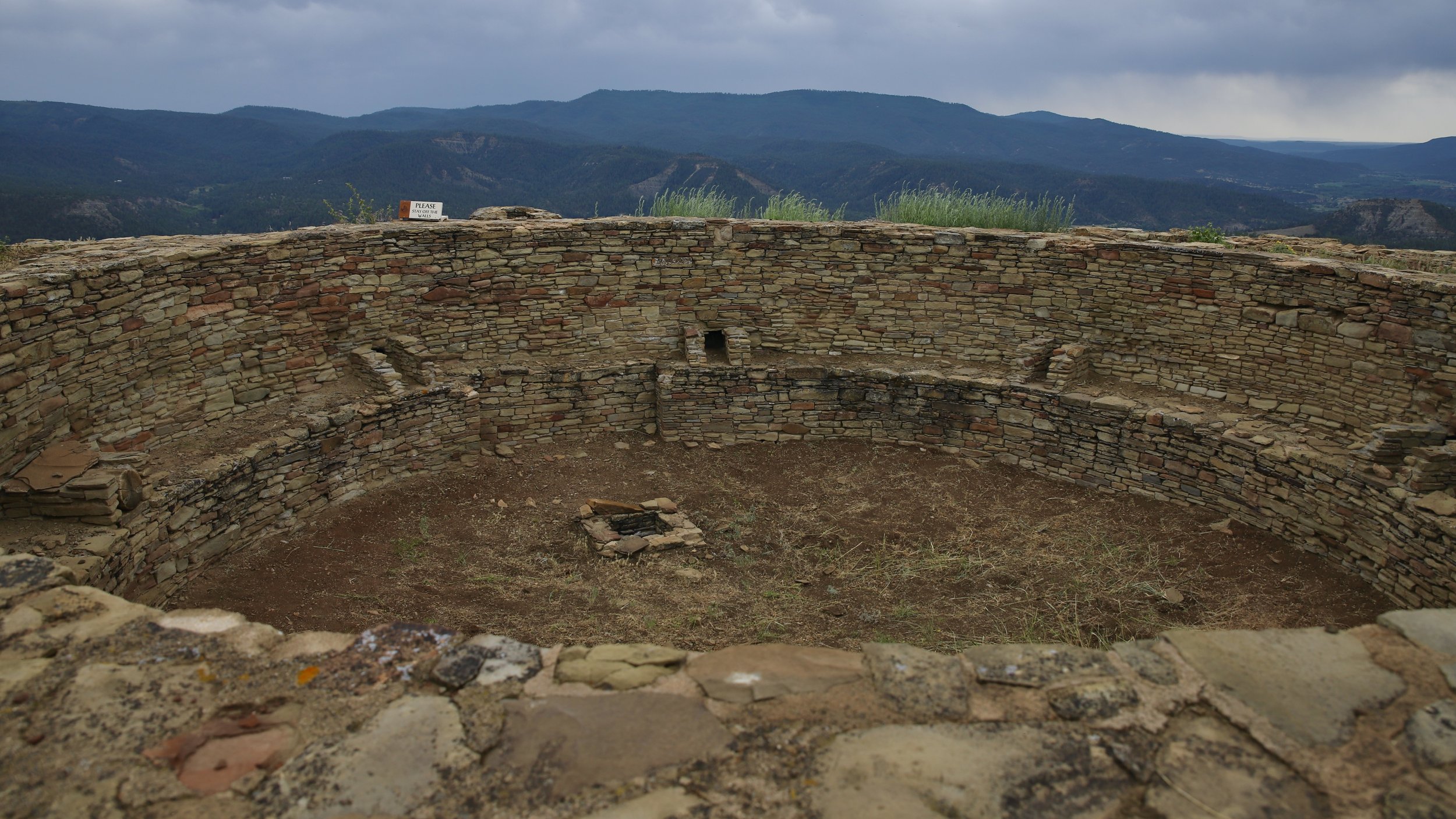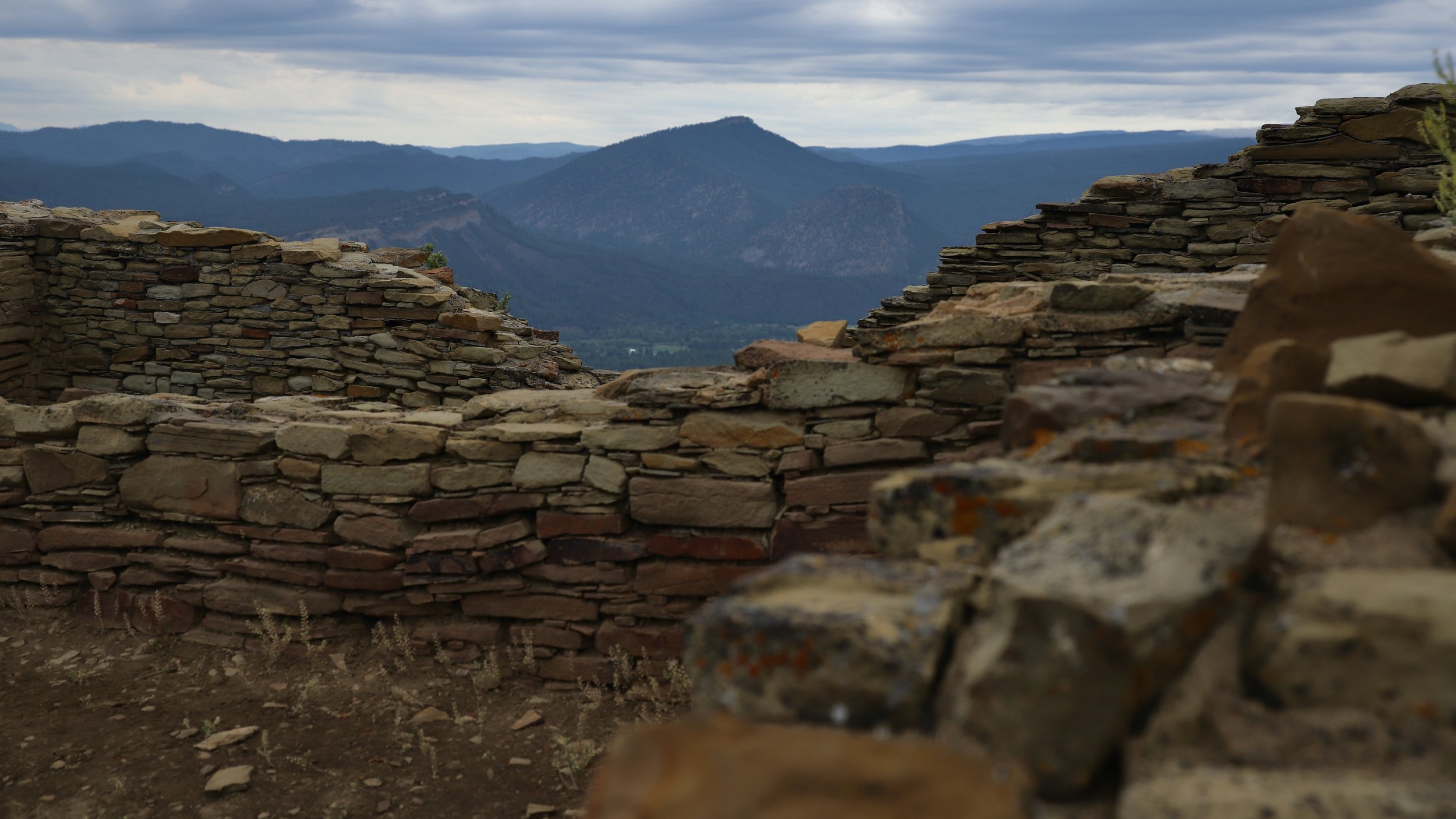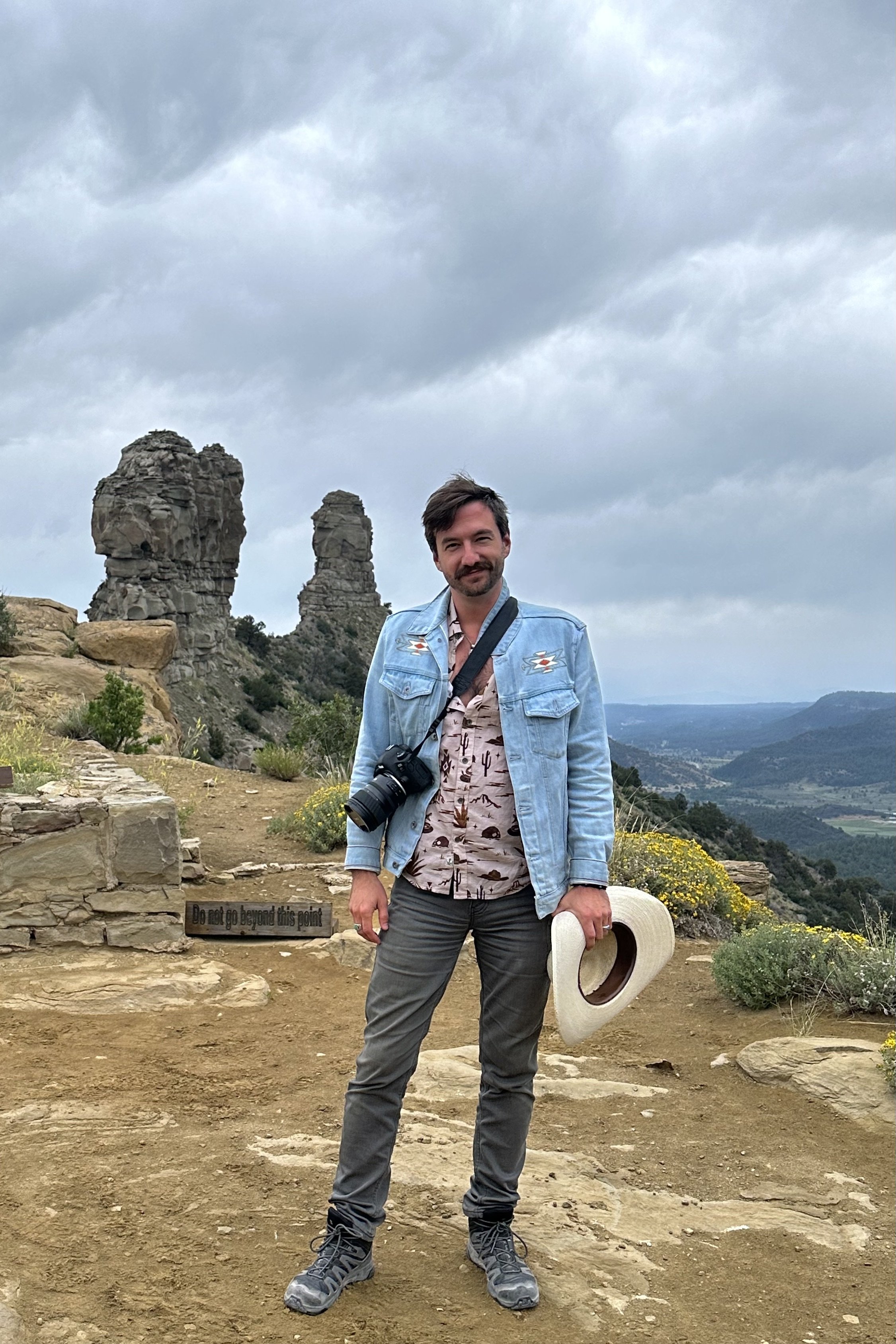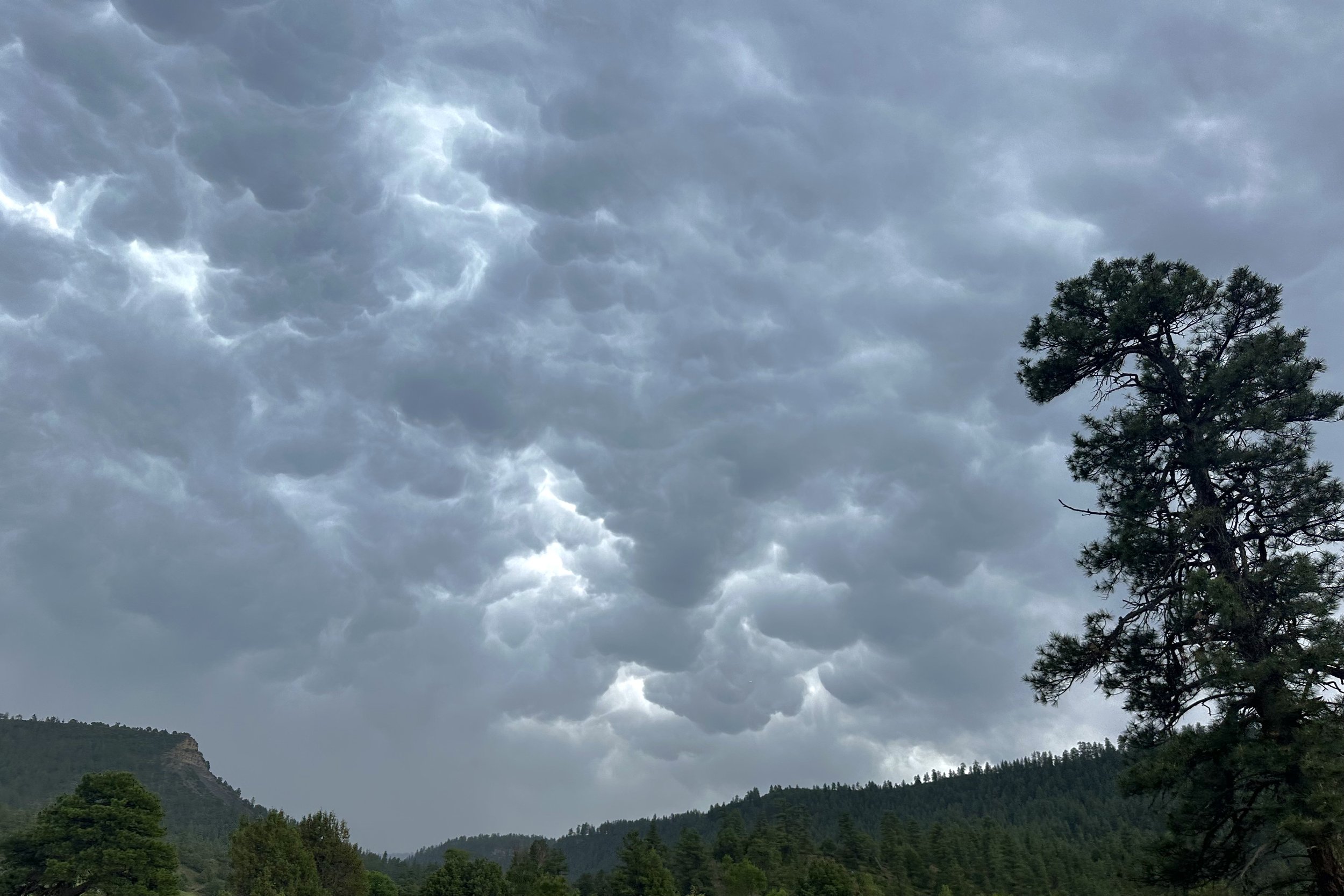
Chimney Rock National Monument
Mesa Village and Great House Pueblo Trail
Moderately Challenging 2/3rds Mile Roundtrip Trail At 7,600 Feet To A Monumental Ceremonial Great House & Great Kiva Associated With Two Natural Towers & The Northern Major Lunar Standstill
Check out the museum and gift shop at the base of the site where you can also sign up for a guided tour. But you don’t have to take the guided tour. You then drive up to the site on a dirt road. The parking lot at the top has restrooms and more guides with information you can take on the hike. There will be a ranger up at the Great House and Great Kiva to help answer questions.
Only open May 15th - October 15th.
Scroll down for more information on the site.








Between Durango and Pagosa Springs in southwestern Colorado is one of the most interesting ceremonial monumental Anasazi Ruins in the entirety of the American Southwest: Chimney Rock National Monument. Besides being the most northeastern Chaco Outlier Great House, Chimney Rock is built on the top of a mountain with no easy access to water, food, or warmth. Clearly, it was an important site for the Chacoan Anasazi/Ancestral Puebloans. Like all Chacoan and even later Puebloan peoples, the people who built Chimney Rock were knowledgeable about celestial occurrences. At Chimney Rock, an incredibly interesting and rare phenomenon occurs and the Anasazi knew about it and built this Great House and Great Kiva at the site to witness it. This phenomenon is known as the Northern Major Lunar Standstill. The site says this of the phenomenon: “The moon's orbit of Earth oscillates on an 18.6-year cycle. While the moon rises at different points on the horizon over a month-long period, the horizon limits of the moon's rising will expand and contract. At the point of widest expansion, and for about three years of the 18.6-year cycle, the moon can be seen to rise between the two pinnacles as viewed from the Great House.”
The Southern Major Lunar Standstill was very recently noticed as rising between two points on the southern mountain range. A ranger pointed out the spot and a picture of it is located at the bottom of this page.
The Anasazi/Ancestral Puebloans knew of this major event and built at this site to better witness it. There are two recognized major building periods at the site: AD 1076 & 1093. Both of those phases of building coincided with the Northern Major Lunar Standstill.
These phases of building were serious matters of construction though. It took the people quite a bit of man hours to carry the hundreds of thousands of blocks of stone up to this high point on the mountain where they were hammered into place. Not to mention the large timbers brought from an astounding 20 miles away.
Those timbers were also used to construct the enormous 44 feet across Great Kiva. That was an enormous Kiva so no doubt many different groups would send their elite people to meet and perform rituals in the kiva during the Standstill.
Despite such an enormous Kiva and Great House, it’s doubtful the people lived here year round. There’s very little trash, food wasn’t grown there, water was far below, and even firewood was scarce. They had to haul up water from the Piedra River far below. There were pithouses located at the site that were built around the time of the Great House and Great Kiva though. Still, there’s just not enough evidence to suggest they lived at the site year round.
This is a quote from my very own podcast about the place’s importance:
“There’s also a distinct lack of trash and artifacts, not to mention its difficult living environment, further suggesting it was a ritual space utilized for its natural features. But the ritual landscape was all important and a part of that is the number two.
In Navajo, Hopi, Aztec, the Mississippian, the Maya, and more, there’s the legend of the hero twins helping humanity… and all of those cultures also love picking spots with twin rocks or twin substantial features to build at. It really happened all over North America but one of the most obvious places is in the southwest and even more obvious, at Bears Ears, the two rock features sticking up out of the landscape that’s important to… oh, 25 separate indigenous groups around the region.”
There is growing evidence at the site of another phenomenon I have mentioned in my own podcast series over the Ancient Ones. That is their use of signal fires or even mirrors over great distances. At Chimney Rock there is evidence for large signal fires and recently, an archaeologist conducted an experiment where she used a mirror to signal all the way to Huerfano Mesa, the farthest mesa visible from the site to the southwest, towards Chaco. A picture of Huerfano Mesa is located at the bottom of this page. “From there, signal fires could be seen at Far View house at Mesa Verde, Pueblo Alto in Chaco Canyon, and the Great House here at Chimney Rock.” Archaeologist Stephen Lekson suggests those signal fires continued from Chaco all the way down to Paquime in Mexico and even beyond. Evidence of signal fire towers have been found near Bears Ears but again they no doubt went further than that. Probably over to modern day Flagstaff in Arizona. But probably even further than that. Possibly over to the Lost City in Nevada near Lake Mead. But curiously, obsidian mirrors have been found at Chaco and a few other Great Houses so we know they also used them.






There is also a structure at Chimney Rock that is also found at most every other Great House as well. That is the “Guard House”. Archaeologists can only guess at its purpose but I assume it was where you paid your entrance fee. It certainly controlled access to the Great House and Great Kiva.
There’s a good chance the Ancient Ones believed their elite controlled the heavens or at least derived their power from beings from heaven. That would change after the Civil War and disillusionment of the Chacoan world. Stay tuned to my forthcoming episode which will revisit the Anasazi World.
In the 1940s a Lookout Tower was built by the CCC but it was removed in 2010 so that people could witness the Lunar Standstill from the Great House. That’s how new this site’s relevance is to archaeologists who study the Chacoan World.
Clearly, Chimney Rock was of great importance to the Chacoan Anasazi… right up until the Chacoan world collapsed and the entire Southwestern Four Corners Region was completely abandoned. Abandoned and ignored. Recently I saw a map of the modern Puebloan, Hopi, Zuni, and other cities and regions compared to the Chacoan Anasazi regions and the there is no overlap. The people abandoned the Four Corners Chaco region and then surrounded it like the place was Chernobyl. And then later, the Athabaskan Navajo and Apache moved in. Yet even they avoided the places filled with the ghost sickness that were Chacoan Anasazi ruins.
Below are pictures of the Southern Major Lunar Standstill spot and Huerfano Mesa.



We showed up during a wonderful and very cool summer thunderstorm. It did not distract from the site’s awesomeness.

